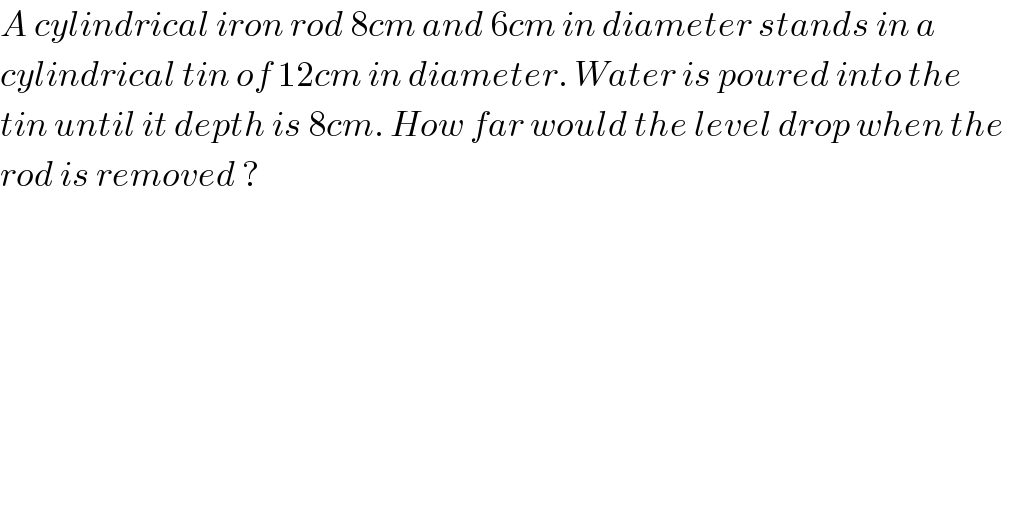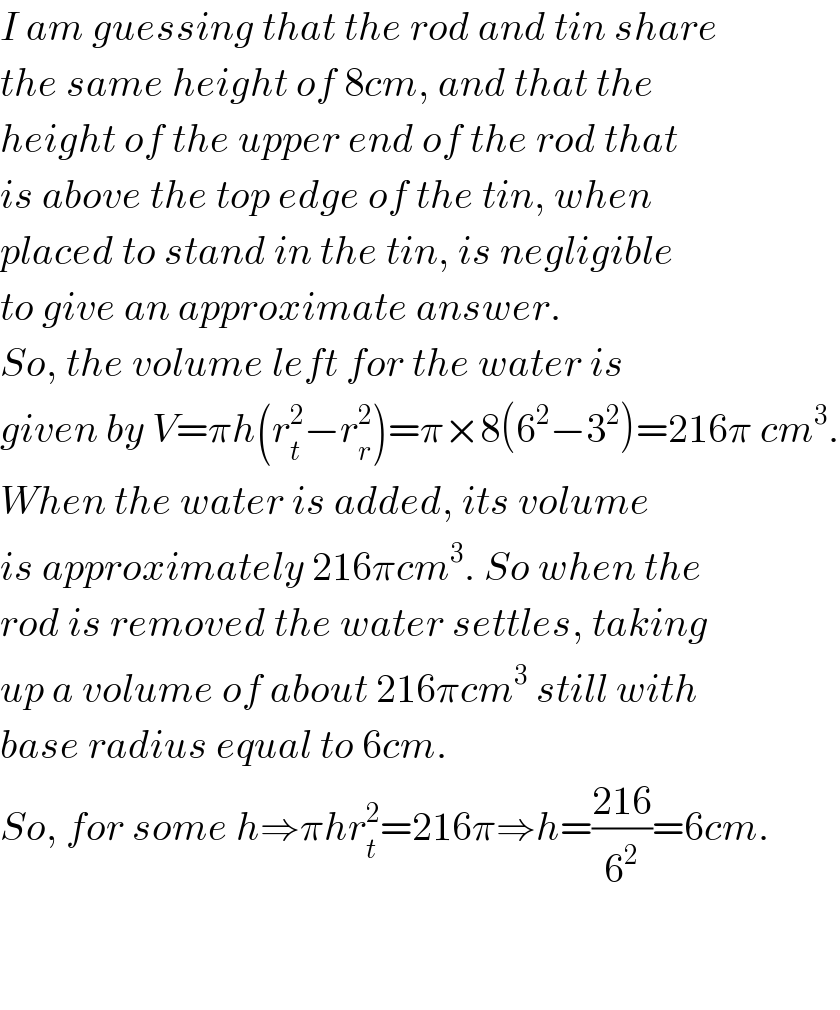Question Number 5351 by sanusihammed last updated on 10/May/16

$${A}\:{cylindrical}\:{iron}\:{rod}\:\mathrm{8}{cm}\:{and}\:\mathrm{6}{cm}\:{in}\:{diameter}\:{stands}\:{in}\:{a} \\ $$$${cylindrical}\:{tin}\:{of}\:\mathrm{12}{cm}\:{in}\:{diameter}.\:{Water}\:{is}\:{poured}\:{into}\:{the} \\ $$$${tin}\:{until}\:{it}\:{depth}\:{is}\:\mathrm{8}{cm}.\:{How}\:{far}\:{would}\:{the}\:{level}\:{drop}\:{when}\:{the}\: \\ $$$${rod}\:{is}\:{removed}\:? \\ $$
Commented by Yozzii last updated on 11/May/16

$${I}\:{am}\:{guessing}\:{that}\:{the}\:{rod}\:{and}\:{tin}\:{share} \\ $$$${the}\:{same}\:{height}\:{of}\:\mathrm{8}{cm},\:{and}\:{that}\:{the} \\ $$$${height}\:{of}\:{the}\:{upper}\:{end}\:{of}\:{the}\:{rod}\:{that} \\ $$$${is}\:{above}\:{the}\:{top}\:{edge}\:{of}\:{the}\:{tin},\:{when} \\ $$$${placed}\:{to}\:{stand}\:{in}\:{the}\:{tin},\:{is}\:{negligible} \\ $$$${to}\:{give}\:{an}\:{approximate}\:{answer}. \\ $$$${So},\:{the}\:{volume}\:{left}\:{for}\:{the}\:{water}\:{is} \\ $$$${given}\:{by}\:{V}=\pi{h}\left({r}_{{t}} ^{\mathrm{2}} −{r}_{{r}} ^{\mathrm{2}} \right)=\pi×\mathrm{8}\left(\mathrm{6}^{\mathrm{2}} −\mathrm{3}^{\mathrm{2}} \right)=\mathrm{216}\pi\:{cm}^{\mathrm{3}} . \\ $$$${When}\:{the}\:{water}\:{is}\:{added},\:{its}\:{volume} \\ $$$${is}\:{approximately}\:\mathrm{216}\pi{cm}^{\mathrm{3}} .\:{So}\:{when}\:{the} \\ $$$${rod}\:{is}\:{removed}\:{the}\:{water}\:{settles},\:{taking} \\ $$$${up}\:{a}\:{volume}\:{of}\:{about}\:\mathrm{216}\pi{cm}^{\mathrm{3}} \:{still}\:{with} \\ $$$${base}\:{radius}\:{equal}\:{to}\:\mathrm{6}{cm}. \\ $$$${So},\:{for}\:{some}\:{h}\Rightarrow\pi{hr}_{{t}} ^{\mathrm{2}} =\mathrm{216}\pi\Rightarrow{h}=\frac{\mathrm{216}}{\mathrm{6}^{\mathrm{2}} }=\mathrm{6}{cm}. \\ $$$$ \\ $$$$ \\ $$
